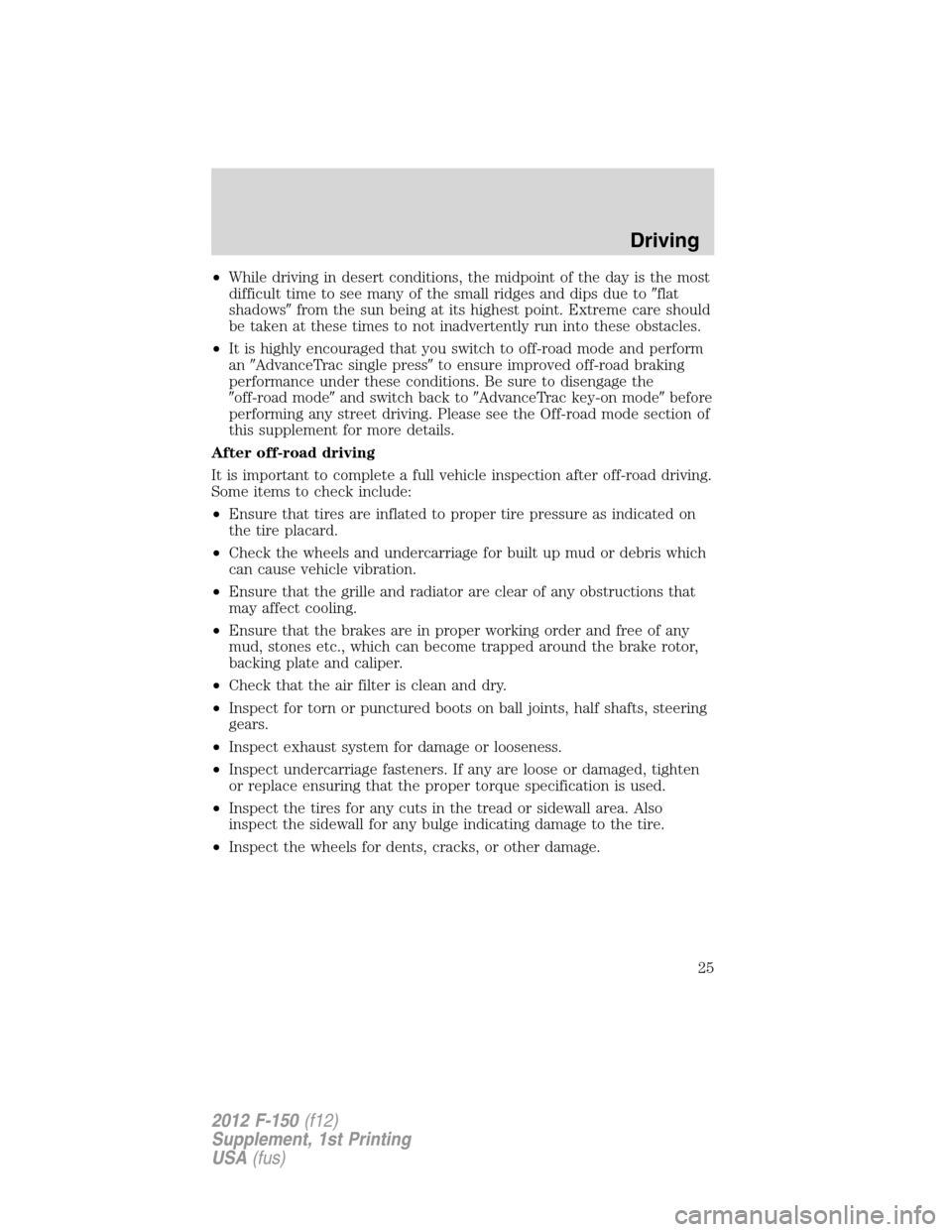Page 8 of 36

ENGINE INFORMATION
6.2L V8 engine
Bore x Stroke102x95mm
(4.01 x 3.74 in.)
Displacement6.2L (6207 cc)
Compression ratio9.8:1
Horsepower (SAE
net)401 hp @ 5500 rpm on 87 octane
411 hp @ 5500 rpm on 91 octane
Torque434 lb-ft @ 4500 rpm on 87 octane
434 lb-ft @ 4500 rpm on 91 octane
Redline6000 rpm
Specific output64.6 hp/l on 87 octane
66.2 hp/l on 91 octane
ValvetrainSingle overhead cam, roller rocker shaft with
hydraulic lash adjustment, inverted-tooth chain
drive, ovate-wire valve springs, two valves per
cylinder
Fuel systemSequential electronic fuel injection, returnless
fuel system
Ignition systemCoil-on-plug electronic ignition with secondary
wire and dual-plug
Throttle bodySingle 80 mm (3.15 in)
Exhaust manifoldsCast-iron high silicon, molybdenum (HiSiMo)
TOWING CAPACITY
The maximum weight the SuperCab vehicle can tow is limited to
6,000 lb. (2721 kg). The Gross Combination Weight Rating (GCWR) is
12,400 lb. (5624 kg).
The maximum weight the SuperCrew vehicle can tow is limited to
8,000 lb. (3629 kg). The Gross Combination Weight Rating (GCWR) is
14,700 lb. (6668 kg).
Refer toTrailer towingin theTires, Wheels and Loadingchapter of
yourOwner’s Guidefor additional towing information.
Engine/Transmission
8
2012 F-150(f12)
Supplement, 1st Printing
USA(fus)
Page 25 of 36

•While driving in desert conditions, the midpoint of the day is the most
difficult time to see many of the small ridges and dips due to�flat
shadows�from the sun being at its highest point. Extreme care should
be taken at these times to not inadvertently run into these obstacles.
•It is highly encouraged that you switch to off-road mode and perform
an�AdvanceTrac single press�to ensure improved off-road braking
performance under these conditions. Be sure to disengage the
�off-road mode�and switch back to�AdvanceTrac key-on mode�before
performing any street driving. Please see the Off-road mode section of
this supplement for more details.
After off-road driving
It is important to complete a full vehicle inspection after off-road driving.
Some items to check include:
•Ensure that tires are inflated to proper tire pressure as indicated on
the tire placard.
•Check the wheels and undercarriage for built up mud or debris which
can cause vehicle vibration.
•Ensure that the grille and radiator are clear of any obstructions that
may affect cooling.
•Ensure that the brakes are in proper working order and free of any
mud, stones etc., which can become trapped around the brake rotor,
backing plate and caliper.
•Check that the air filter is clean and dry.
•Inspect for torn or punctured boots on ball joints, half shafts, steering
gears.
•Inspect exhaust system for damage or looseness.
•Inspect undercarriage fasteners. If any are loose or damaged, tighten
or replace ensuring that the proper torque specification is used.
•Inspect the tires for any cuts in the tread or sidewall area. Also
inspect the sidewall for any bulge indicating damage to the tire.
•Inspect the wheels for dents, cracks, or other damage.
Driving
25
2012 F-150(f12)
Supplement, 1st Printing
USA(fus)
Page 33 of 36

•Do not overload your vehicle. Maximum vehicle and axle weights are
listed on the tire information placard.
•Extra caution should be taken when operating the vehicle near its
maximum load, including assuring proper tire pressure and reducing
speeds.
•In the event that you encounter an abnormally harsh impact, inspect
your tires for damage.
•Inspect your tires for damage on a regular basis. If a tire is damaged,
replace it immediately.
•Proper suspension alignment is critical for maximum performance and
optimal tire wear. If you notice uneven tire wear, have your alignment
checked.
•Your SVT vehicle follows a more stringent tire rotation schedule as
compared to the base F-150. Refer toTire rotationin the
Maintenancechapter for more information.
•When replacing tires, the only way to assure original performance is to
use the original equipment tire. If a different tire is used, it should be
the same size, speed rating and load rating.
WHEELS
Your SVT vehicle is equipped with unique wheels matched to the tires.
To avoid damage to your wheels:
•Maintain proper tire pressure (see “Tires” previously listed).
•Due to extreme tire/wheel width, this vehicle cannot be taken through
an automatic car wash that uses mechanical tracks, as wheel damage
may result.
•When installing wheels, always torque lug nuts to specification with a
torque wrench.
•Inspect your wheels for damage on a regular basis. If a wheel is
damaged, replace it immediately.
•In the event that you encounter an abnormally harsh impact, inspect
the outer diameter of your wheels, both inside and out, for damage.
Tire Information
33
2012 F-150(f12)
Supplement, 1st Printing
USA(fus)